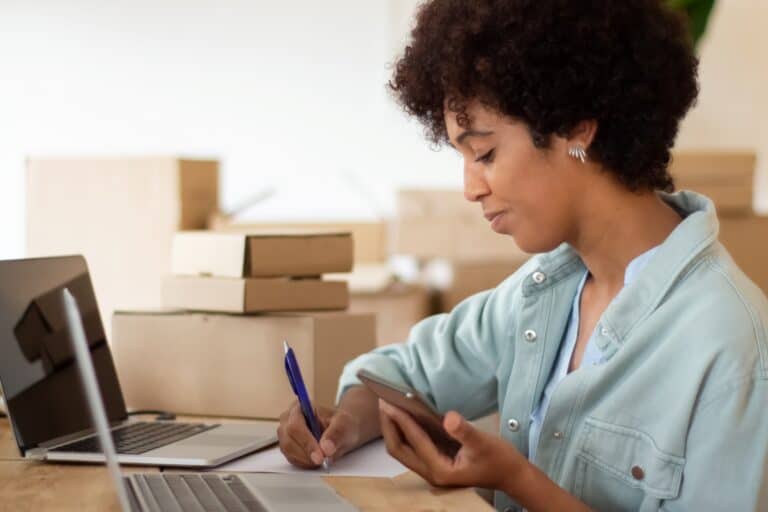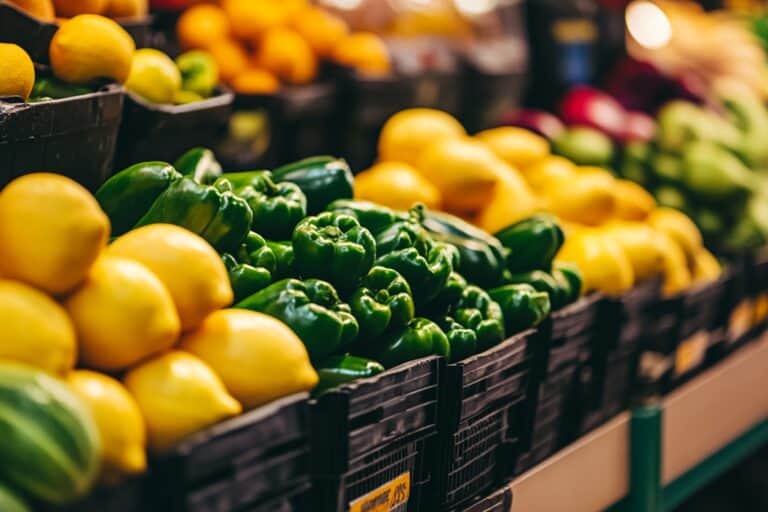Need to know how to pack household items safely for a move? This comprehensive guide provides you with essential packing tips and strategies to ensure a seamless transition. From safeguarding fragile glassware to managing heavy furniture, we cover all aspects of the packing process. Learn how to use packing materials like bubble wrap and sturdy cardboard boxes effectively, and discover the importance of labelling boxes to ensure everything arrives safely and organised at your new home.
Key Takeaways
- Use high-quality packing supplies like sturdy boxes and bubble wrap to protect your belongings and minimise breakage during transport.
- Declutter before packing to streamline your move and reduce costs, making it easier to decide what to keep, sell, or donate.
- Implement a colour-coding system for labelling boxes, ensuring an organized and efficient moving process while safeguarding fragile and valuable items.
Must-Have Supplies for Packing
Packing for a move requires the right packing supplies. The essential packing materials you need include sturdy cardboard boxes, bubble wrap for cushioning fragile items, packing tape for securing boxes, and permanent markers for labelling.
Using high-quality materials, such as sturdy boxes and paper or bubble wrap, can significantly reduce the risk of breakage during transport. Don’t forget to pack boxes with items like toilet paper rolls and old newspapers for additional padding.
Repurposing existing items like suitcases and storage boxes can save both space and costs. These can be especially useful for packing clothing, shoes, and other non-breakable items. As you start packing, ensure you have enough supplies to avoid interruptions in your packing process.
Choosing the right packing materials is not just about protecting your belongings; it’s about making the entire moving process more efficient and less stressful. So, gather all your packing items and begin packing with confidence.
Choosing the Right Box Sizes
Selecting the right box sizes is essential for a successful move. Cardboard boxes come in various sizes, and using the appropriate ones can prevent damage to your items. For example, small boxes are ideal for fragile items as they minimise movement and reduce the risk of breakage. For heavier items, opt for smaller boxes to avoid making them too heavy to carry.
Stacking items and placing smaller items inside larger ones can save space and ensure that your boxes are packed efficiently. Always place lighter boxes on top of heavier ones to prevent crushing. If you have original boxes for items like kitchen appliances, these can offer the best protection during the move.
Eco-Friendly Packing Options
Moving can be an opportunity to make environmentally conscious choices. Recycled cardboard boxes provide a sustainable alternative for packing, reducing your environmental impact. Biodegradable packing peanuts are another eco-friendly option that can replace traditional foam peanuts.
Using eco-friendly packing materials helps reduce waste and contributes to a more sustainable moving process. Adopting these materials, such as recycled boxes and biodegradable peanuts, makes your move greener and more responsible. Start packing with these options to make a positive impact.
TIP
Invest in durable packing supplies like sturdy boxes and bubble wrap to safeguard your belongings during transit. Consider repurposing items like suitcases and storage bins to save on costs and reduce waste while packing efficiently.
Streamlining Your Belongings Before Packing
Before you start packing, it’s crucial to streamline your belongings. Decluttering helps ensure that only items you utilise and cherish are moved, which can lead to reduced moving expenses. By decluttering, you can significantly minimise the volume of items you need to move, reducing overall moving costs and making the process more manageable.
You can even profit from unwanted items by selling them on platforms like Facebook Marketplace or at a car boot sale. Moreover, decluttering lays the foundation for an organised inventory, which helps track belongings during the move. This step is essential for a smooth and cost-effective moving process.
Tips for Effective Decluttering
Effective decluttering starts with sorting your belongings by category, which simplifies the decision-making process about what to keep or discard. Decluttering before a move is crucial to reduce stress and make the packing process easier.
Categorising items helps you assess their value and usefulness, making it easier to decide whether to keep, sell, or donate them. Consider using methods like the ‘one-year rule,’ where items not used in the past year can be evaluated for keeping or donating. These top packing tips will help you clear out unnecessary items and save time.
How to Secure Fragile Items for the Move to Islington
Securing fragile items is one of the most critical aspects of moving. Investing in strong packing tape is crucial to prevent boxes from splitting and items from getting damaged. Using packing paper is effective for wrapping fragile possessions, helping to prevent scratches and damage.
It’s advisable to pack heavy items in smaller boxes to avoid breaking them. Pay close attention when packing valuables to avoid damage. Hiring professionals to pack antiques and artwork minimises the risk during transportation.
Handling Bulky and Heavy Items Safely
Packing large and bulky items can be challenging due to their size and weight. Disassembling furniture prevents damage and saves space in the moving house truck. Distribute heavier items evenly across boxes to prevent breakage.
Wrap furniture to prevent scratches or damage during the move. For packing heavy items, use small boxes as they are easier to lift and carry. Stacking pans and pots saves space by storing them inside each other.
Old bedding or large boxes can be effective materials to wrap furniture and prevent damage. Fully cover items when wrapping to protect them from damage.
Removal companies might offer heavy lifting assistance for packing heavy furniture. Removal companies can offer specialist blanket wraps for large furniture. This is especially useful for items that cannot be disassembled.
Box Labelling and Organisation Tips

Organising and labelling boxes ensures a smooth move. Pack one room at a time to maintain organisation. Keeping relevant items together helps with the unpacking process and box placement during the move. Labelling boxes identifies contents and streamline unpacking. Clearly mark which room each box belongs to for easier and more efficient moving.
Colour-Coding System
Implementing a colour-coding system can greatly enhance the efficiency of the moving process. Assigning a specific colour to each room simplifies the identification of boxes during the moving process. Different colours for each room enable quick identification of box locations. This method helps label things clearly and keeps the move organised.
Labelling Fragile Items
Clearly labelling boxes containing fragile items helps both movers and yourself to handle them with extra care. Implementing a colour-coding system can make it easier to identify and prioritize fragile items during the move. Label boxes with fragile items using permanent markers for easy recognition and proper handling. This step is crucial for protecting your delicate items.
Safeguarding Personal Belongings and Valuables
Safeguard personal belongings and valuables during a move. Photograph valuable items before packing for insurance purposes. Pack all possessions, especially breakables, securely. Tracking these items ensures proper handling during the move.
Using a Separate Box for Important Documents
Organising important documents is essential for a smooth move. Store important documents together in a wallet for organisation and protection. Place these documents in a separate, clearly labelled box for easy access and identification. This will prevent any last-minute scrambles looking for critical paperwork.
Packing Jewellery and Small Valuables
Pack jewellery and small valuables with special attention. Egg cartons or toilet paper rolls are suitable alternatives for packing jewellery. Prevent damage by ensuring small items don’t move around within the box. For added protection, wrap delicate items by wrapping individual pieces of jewellery in soft cloth before placing them in cartons.

Creating an Essentials Kit for the Moving Day to Islington
An essentials box keeps necessary items accessible for immediate use upon arrival. Keep items with high sentimental value close during the move for proper handling. Transport valuable jewellery with you rather than placing it in the truck. Pack the essentials box last and unpack it first for immediate access to important items.
What to Include in Your Essentials Box
Include important documents, such as identification and medical records, in the essentials box. A first aid kit with basic supplies like band-aids and antiseptic is essential. Include essential toiletries like toothbrushes, shampoo, and toilet paper in your overnight bag for the first night. Pack versatile clothing and weather-appropriate gear in your essentials box.
Why Consider Professional Packing Assistance
Removal companies offer packing services to streamline the moving process. Hiring a removal company for packing saves time and alleviates stress.
Professional packing services offer extra protection for specialist items, ensuring safe transportation. Full-packing services are often more expensive but save significant time and effort compared to self-packing.
Full vs. Partial Packing Services
Full packing services involve packing all items, while partial services focus on specific items that require extra care. Choosing between full and partial packing services depends on the volume of belongings and your comfort with packing.
Assess your packing needs and comfort to choose between full and partial packing services. This choice helps you avoid packing stress and ensures careful handling of your items.
Specialised Packing for Antiques and Artwork
Specialised packing for valuables like antiques and artwork ensures their safety during transport. Some removal companies provide specialised packing services for safe wrapping and transport of valuables. Appropriate packing materials and techniques protect delicate items throughout the move. This is a top tip for those with valuable collections.
Summary
Moving to Islington can be a breeze with the right packing tips and strategies. From must-have packing supplies to effective decluttering techniques and professional packing services, every step is crucial in ensuring a smooth move.
Remember, the key to a successful move is preparation and organisation. By following these tips and keeping an essentials box handy, you’ll be well on your way to enjoying your new home in Islington. Happy moving!
Frequently Asked Questions
What are the essential packing materials needed for a move?
To ensure a smooth move, make sure you have sturdy cardboard boxes, bubble wrap, packing tape, and permanent markers. With these essential packing materials, you’re setting yourself up for success!
How can I make my move more eco-friendly?
Making your move eco-friendly is simple: opt for recycled cardboard boxes and biodegradable packing peanuts. By making these choices, you’re reducing waste and contributing to a healthier planet!
Why is decluttering important before a move?
Decluttering is crucial before a move as it lowers expenses and simplifies packing. Embrace this opportunity to lighten your load and make your move smoother!
What should I include in an essentials box for moving day?
For a smooth moving day, make sure to include important documents, a first aid kit, essential toiletries, and a versatile outfit. Being prepared will make your transition seamless and stress-free!
What are the benefits of hiring professional packing services?
Hiring professional packing services is a game-changer for a hassle-free move, as they save you time, minimise stress, and ensure that your belongings are packed securely. Trusting the experts lets you focus on the excitement of your new journey!








